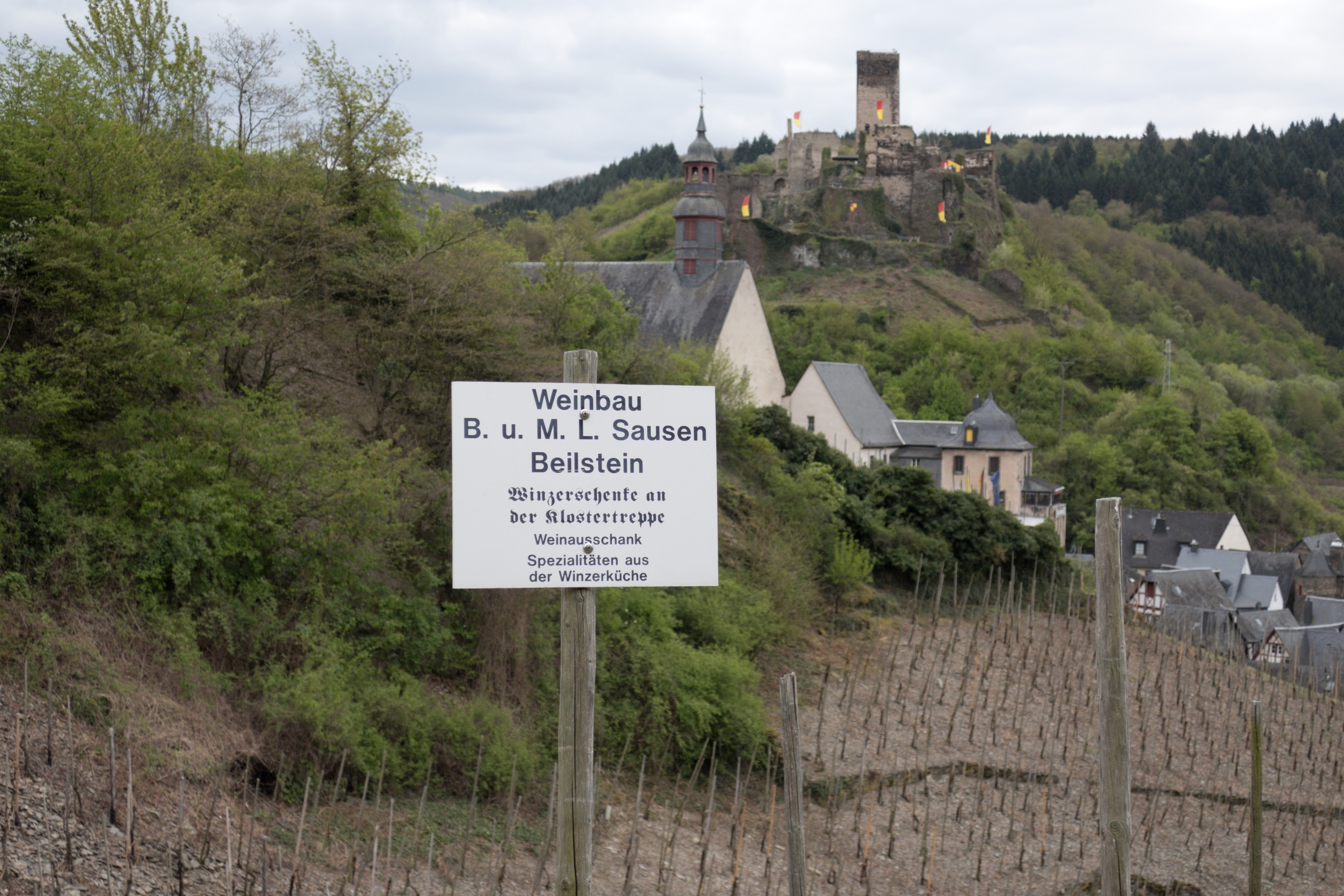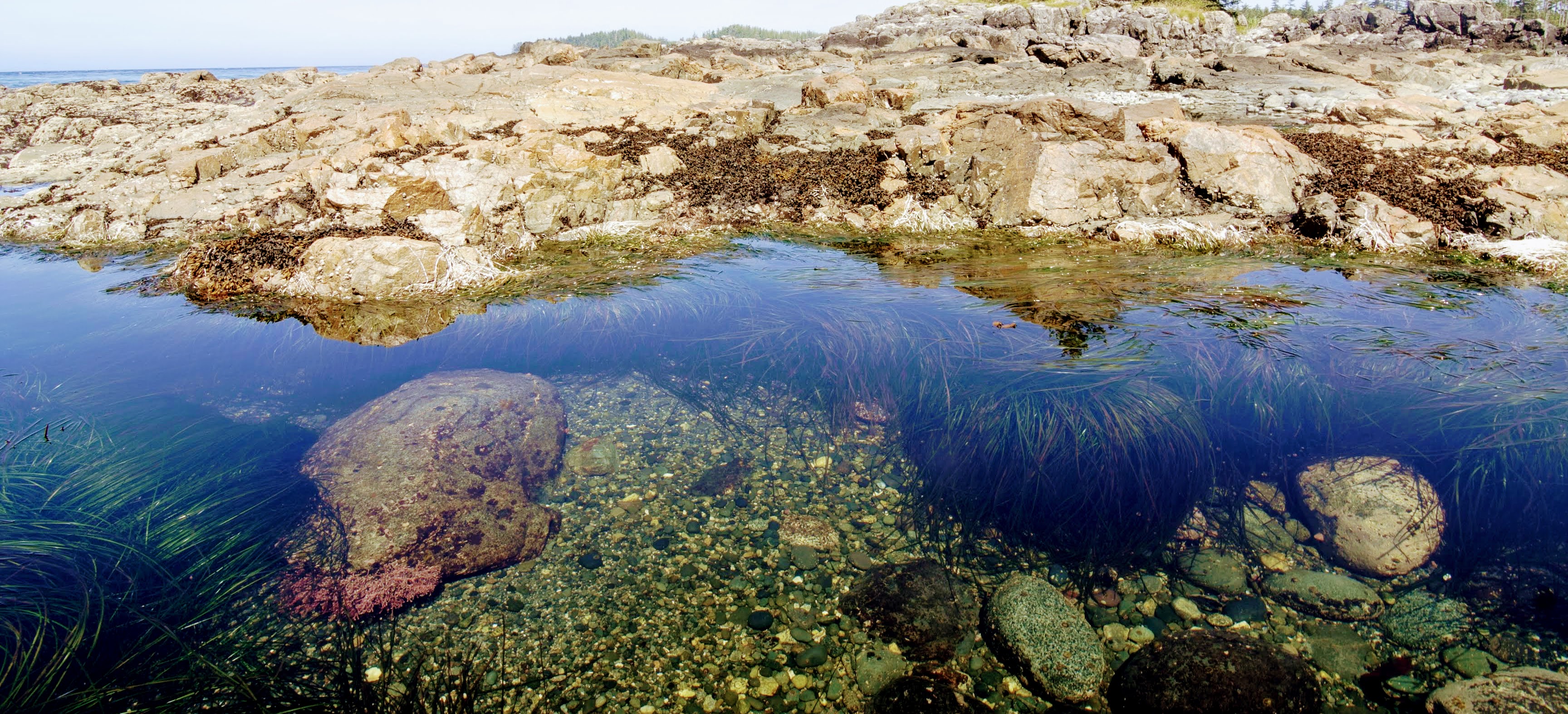I spent some time recently in the Mosel River valley in Germany. The valley cuts deeply through the landscape, but in contrast to the rugged loneliness found in canyons and gorges along the US west coast, here the verdant agricultural valley is dotted with towns and castles. Every few miles you encounter a new town, a new castle, a new church. You can usually see the next town from the current one, but each has a subtly different flavor. This density of experience is a perfect match for a slow tour by bike or on foot. For bicyclists there are river level trails dedicated to non-motorized traffic and for hikers there are trails that criss-cross the valley's steep sides. It's pretty awesome.

The steep valley sides are walkable in large part because since Roman occupation in the first centuries of the "common era", the valley has been planted with wine grapes. The valley walls have been cut and carved and terraced to maximize the area under cultivation.
Let show of vines lead on another pageant, and let Bacchus' gifts attract our wandering gaze where lofty ridge, far-stretching above scarped slopes, and spur, and sunny hill-side with salient and reentrant rise in a natural theatre overgrown with vinesAusonius, "Mosella", approx. 300-400 CE
To care for the grapes workers needed to walk the length and breadth of the vineyards. So though they were working for one purpose, it turns out that for almost 2000 years farmers have also been slowly and steadily creating the most incredible network of trails. This isn't the sort of thing your local tourist board can conjure up, this is a tradition of hedonism reaching back before written memory.

They make pretty good wine, too. As you might expect. The wine is very precisely described, and made by many small producers doing a very similar thing. It is almost a commodity. If you buy a bottle of QbA Riesling Hochgewächs, Trocken, you know exactly what you are getting.

To help you choose your wine, Germans offer two distinct quality assurance groupings, with specific levels of quality in each group. This doesn't mean that the lowest level in the lower grouping will necessarily be less delightful than the highest level in the highest grouping, but it does mean that the latter had to meet more regulatory assurances of quality.

Qualitätswein
The first, lower level grouping is "Qualitätswein bestimmter Anbaugebiete", or "Qualitätswein", or "QbA". More than half of the wine produced in Germany is QbA. The grapes that go into the wine must be harvested after they reach a certain ripeness, but to get a stronger wine producers can add sugar. The Mosel lies at 50 degrees north, a similar latitude to Vancouver, Canada. It can be hard to get the fruit to produce enough sugar on its own some years. To earn the QbA label the wine is actually taste tested and must be given a good enough qualitative rating. There is a sub-label of QbA, Riesling Hochgewächs. This requires even more ripeness in the grapes and a higher qualitative score. The word is pronounced something like "hog kuh vecks". I must have drank a hogshead barrel of Hochgewächs. Ask for it by name.

Prädikatswein
The second, higher level grouping is Prädikatswein. Within this grouping the descriptions broadly apply to how ripe the grapes are when picked. Kabinett means fully ripe when harvested. Kabinett as in "good stuff, keep it in the cabinet". Then comes Spätlese, which translates as late harvest, and uses riper grapes than Kabinett. Then Auslese, which translates as select harvest, and means like Spätlese but the grapes are hand selected.
Finally, the last three categories within Prädikatswein refer to picking extremely sweet, raisin like grapes. They are Beerenauslese, Eiswein, and Trockenbeerenauslese. These are all rich, sweet, desert wines. Often the reason the grapes are so raisin-like is that they have been infected with a fungus. This fungus, commonly called "noble rot", dries the grape and makes the flavor more complex. Usually these are expensive wines in smaller bottles. Special occasion stuff.

Descriptive terms
These terms modify every one of the previous wine types:
trocken, halbtrocken, feinherb, lieblich, restsüß, süß, edelsüß
German wines are often sweet. It seems to be the taste of the older generation. In any case, as an outsider, it will be assumed you want dry wine. "Trocken" means dry. "Halbtrocken" mean half dry, but is actually pretty sweet. After that, feinherb means you get diabetes drinking it, lieblich means those nearby get diabetes as well, and if anyone drinks edelsüß, the whole bioregion gets diabetes.
Oh, and don't be thrown off by Trockenbeerenauslese. Trocken there means the grape is dry (like a raisin) but the wine the grape makes is sweet.
weißwein, rotwein, roséwein, weißherbst
White wine, red wine, rosé, and finally a "blanc de noir", that is to say a wine made as though it were a white wine, but using red wine grapes. Compared to rosé, this sort of wine might be golden or even fairly clear.
steillage
This describes wine made with grapes from the highest part of the vineyard. Presumably life is harder up there, and the grapes become more complex in their suffering. The best thing that you can do with your limited mortal existence on the Earth is to get a cold bottle of Reisling Spätlese Steillage, Trocken, hike up to the top of the very same vineyard that produced the wine, and drink as you watch the setting sun trace a shadow up the hillside you just climbed. Or so I am told.
Drinking Mosel wine
In the area, it is normal to drink with most meals, and there is no "class premium" attached to wine. A glass of wine costs between 3 and 5 dollars, and a bottle for the table is generally around 10 dollars. To go bottles can be had more cheaply from many storefronts in nearly all the towns that line the Mosel. They will open the bottle and recork it for you if the TSA took your wine opener. It's all very civilised.

If you are in the States, well, that's more difficult. I can't find any of the wine I enjoyed there on offer here. Something similar would be:
It's harder to enjoy wine over here, because the pretense gets in the way. The above wine is described partially: "Rather, it’s almost tannic in its lemon-pith power, with mineral spunk and intense acidity. Give it a couple years to relax, or serve with richer dishes, like monkfish in brown butter."
Yikes! You can keep your mineral spunk. To me it's just a "Riesling Spätlese Trocken"... and I'll take 2 to go, please :)




















































